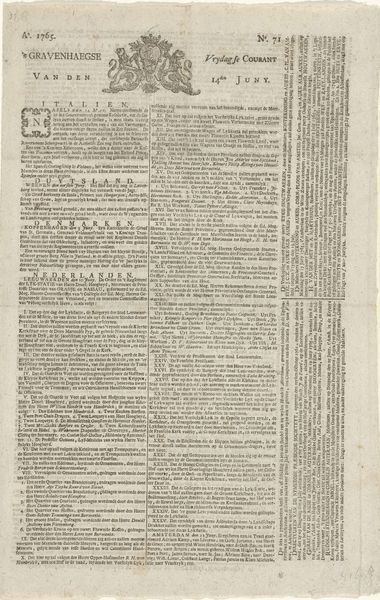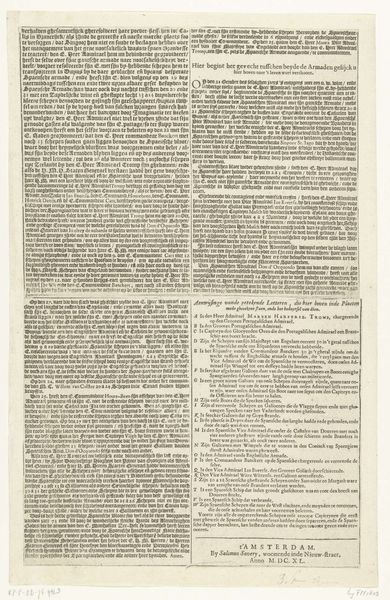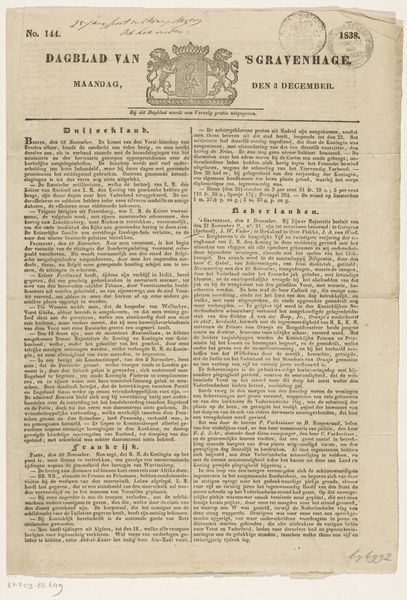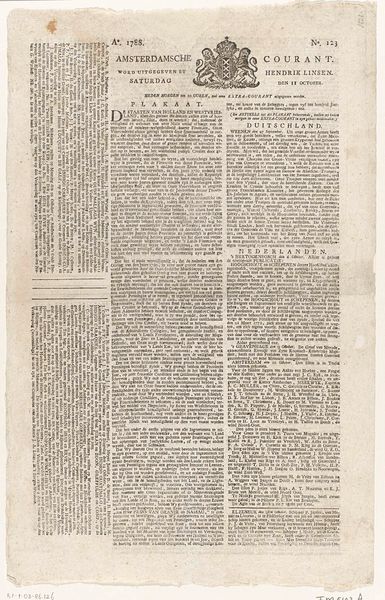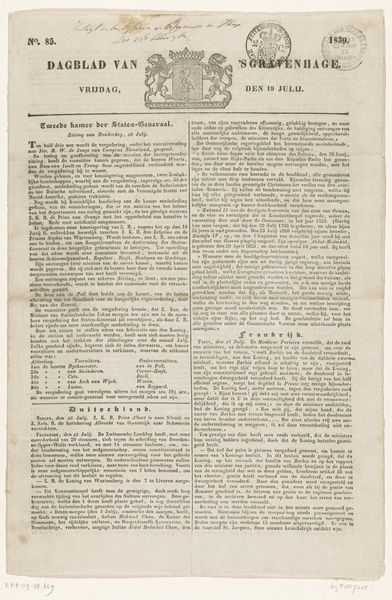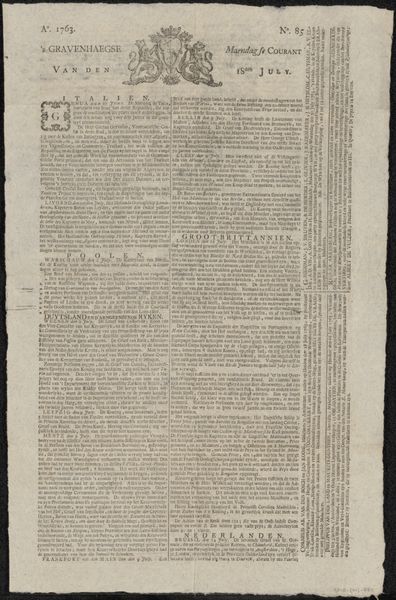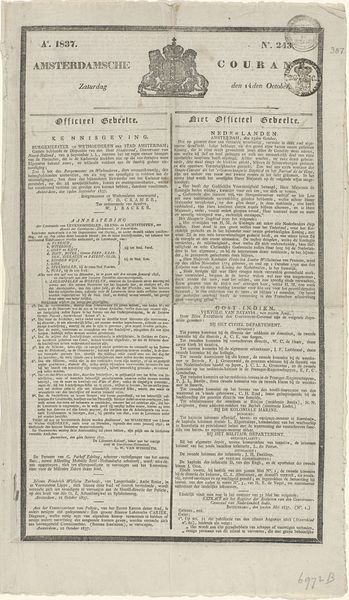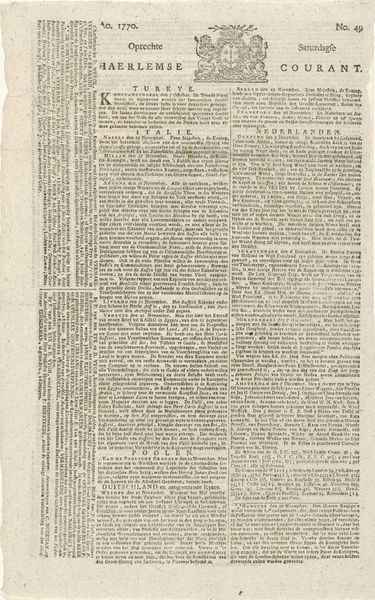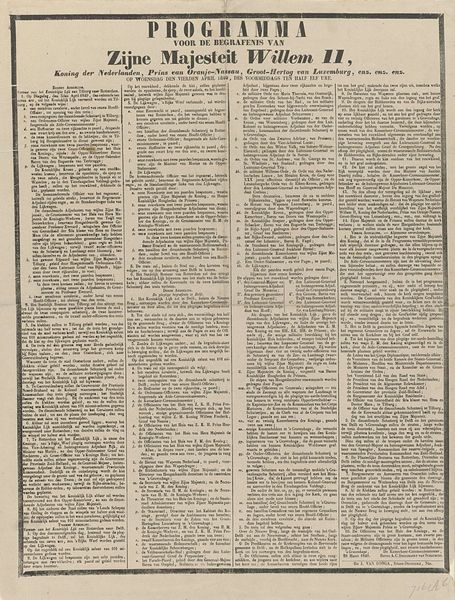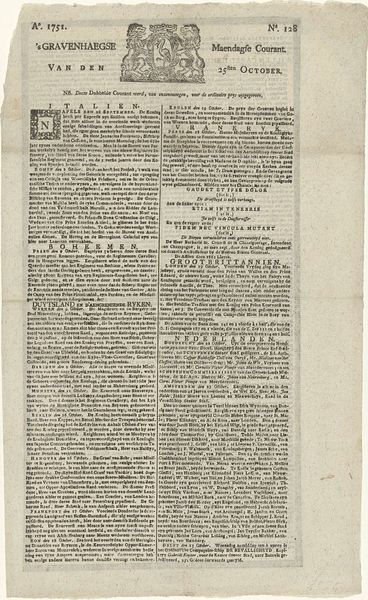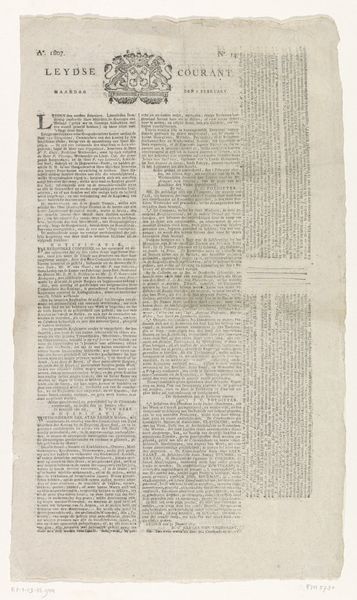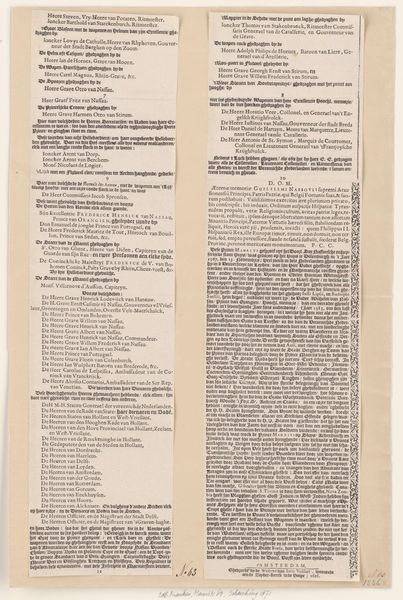
Lijst met de namen van de onderhandelaars bij de vrede van Rijswijk, 1697 1697
0:00
0:00
print, textile, paper, engraving
#
old-fashioned
#
aged paper
#
dutch-golden-age
# print
#
old engraving style
#
textile
#
paper
#
journal
#
history-painting
#
engraving
Dimensions: height 378 mm, width 305 mm
Copyright: Rijks Museum: Open Domain
Editor: Here we have “Lijst met de namen van de onderhandelaars bij de vrede van Rijswijk, 1697,” a print from 1697 by Daniel Hoogstraat. It appears to be a list of names, densely packed onto the page. The paper looks aged and textured, giving it a tangible sense of history. What jumps out at you about this piece? Curator: This work speaks volumes about the role of print in shaping public understanding of diplomacy and power in the late 17th century. Think about it: here is a printed list of negotiators involved in the Treaty of Rijswijk. The Treaty itself marked the end of the Nine Years' War and a shift in European power dynamics. But what did this list *do* for the public? Editor: It informed them? Curator: It did more than that. By publishing the names, Hoogstraat's print gave visibility and, therefore, legitimacy to the negotiators and the process itself. It was a form of public accountability, but also a performance. Can you see how this relatively simple print served the political interests of those in power? Editor: So, it's less about the artistic merit and more about how it functioned within the socio-political context? Curator: Exactly. The 'art' lies in how it disseminates information and shapes public perception of the events and individuals involved. Hoogstraat's role as the printer is critical too. Printing wasn’t just a neutral act; it was a business deeply entwined with the political landscape. Do you notice how the printer added “TOT DELFT, Gedruckt by Daniel Hoogstraat”? Editor: Yes, that definitely reinforces your point about how it's all so deeply connected to the political context of the time, with even the printer asserting themselves! Curator: Precisely. This work reminds us that even seemingly straightforward historical documents are laden with socio-political meaning. It gives you pause to think about all the information we now consider “historical documents.” Editor: I never thought about approaching art from that point of view; that there’s almost always a political angle to these seemingly objective documents. It’s fascinating.
Comments
No comments
Be the first to comment and join the conversation on the ultimate creative platform.
